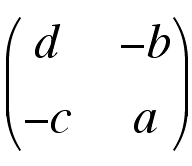
Restoration of deformed structures in cleaved rocks is equivalent to the problem of retro-deformation in section balancing. We seek to undo the effects of deformation.
A typical example of a retrodeformation problem is a slate belt in which the orientations of sedimentary structures have been measured. Some analyses of sedimentary structures are carried out by simple rotation of the structures to horizontal. This works well if bedding surfaces are surfaces of no strain (in flexural slip folding) for example.
More usually there is significant strain in bedding surfaces of deformed rocks, and to get a picture of paleocurrent distributions it is necessary to remove the effects of strain.
Effectively, this means applying a strain which is the opposite of the finite strain, to each measurement. The method used depends on the way in which strain has been determined.
We know
Measure the angle between the structure and the long axis of the strain ellipse in the deformed state θd.
To restore this angle to the original state, calculate θ according to the formula
Strain ratio Rs = tanθ/tanθd
After removing the distortion by this formula, restore the rotational component of strain (if known) by simple rotation.
F=
Calculate the reciprocal deformation matrix:
Actually, because only the distortion matters for rotation, it's possible to neglect the dilation and calculate a simplified reciprocal matrix 
Multiply each vector by this matrix to restore it to an original orientation.
Here are examples from the Meguma Group of NS showing the reorientation of paleocurrents